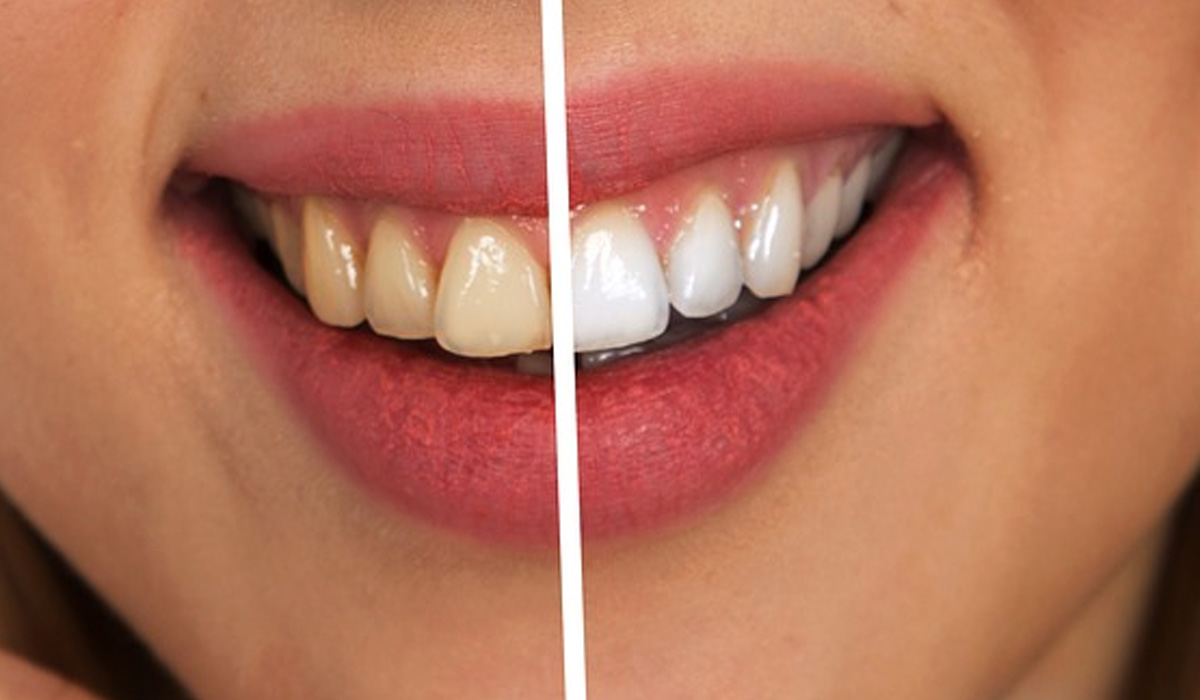We are constantly exposed to images of celebrities with pearly white teeth or ads for tooth-whitening products. Contrary to popular belief, teeth are naturally slightly yellow. Dentin, the tissue beneath the tooth’s enamel, is tinted somewhat yellow.
But more severe discolouration could indicate underlying health problems or poor hygiene and habits. There are several ways to prevent and reverse staining for a whiter smile.
Types of Teeth Staining
It is essential to understand the cause and type of teeth staining. You have to understand the best method of treatment.
- Extrinsic staining: When thinking about tooth staining, this is what people usually think of, and it is the easiest to reverse. Extrinsic, meaning outward, stains are on the surface of the tooth enamel. Food, drinks, and smoking usually cause this staining.
- Intrinsic staining: This type is below the tooth surface and more difficult to remove than extrinsic stains, but not impossible. These types of colours are usually caused by trauma to the tooth or tetracycline staining.
- Staining with age: Dentin naturally darkens with age. It, paired with the prolonged effect of food, beverages, and smoking on the teeth, cause them to become more yellow as we age.
How to Prevent Stained Teeth
The preventative measure is almost always more accessible than the cure. Proper care and avoiding certain things that cause teeth staining can help maintain the state of your smile.
Food and Drinks Certain foods and drinks are known to stain and erode tooth enamel. For whiter teeth, you should avoid the following:
- Soda
- Coffee
- Black tea
- Red wine
- Candy and sweets
Most people know the correlation between these things and teeth staining and are unwilling to give up their coffee for whiter teeth. Be mindful of what you are eating or drinking, and when possible, brush your teeth immediately after consuming tooth-staining foods or drinks.
When it is impossible to brush immediately after, swish water in your mouth so staining agents aren’t on your teeth. Also, using a straw and swallowing drinks swiftly can help keep them off your teeth.
1. Avoid Tobacco
As well as other detrimental health effects, cigarette smoking and chewing tobacco stain teeth. Nicotine itself is colourless but, combined with oxygen, turns yellow. Chewing tobacco stays in the saliva and on the teeth, causing staining.
Tobacco use is also directly linked to gum disease. Smokers are at twice the risk of non-smokers for gum disease. Tobacco stains are often difficult to remove because they are deeply settled after years of smoking, but they can be removed with professional whitening.
2. Regular Brushing and Care
Lack of proper oral hygiene can lead to plaque and tartar buildup and leave food and drinks to sit on the teeth, causing them to yellow. Brushing twice daily with a soft-bristled electronic toothbrush is recommended for adequate tooth cleaning. Also, flossing will help prevent staining between teeth, which is hard for a toothbrush to reach.
Whitening toothpaste and mouthwashes can help speed up the process of removing stains. Also, baking soda is a natural tooth-whitening agent, but be careful and use it in moderation. Too much baking soda can be too abrasive, wear away at the enamel, and cause sensitivity issues.
3. Professional Teeth Cleanings
Brushing your teeth removes plaque, but a buildup can lead to tartar, which can only be removed by a professional dental hygienist. You should get your teeth cleaned every six months. Dental hygienists use special tools to scale and polish each tooth. After cleaning, you may notice your smile looks brighter and feels smoother.
Teeth Whitening Solutions
Preventative measures can help slightly whiten teeth and prevent further staining, but there are several options for fast results to whitening stained teeth.
1. Professional Whitening
A professional tooth whitening treatment is the most effective method of whitening teeth and removing stains. Lasers and LEDs with concentrated bleaching products are used to whiten significantly in only one visit. There are a variety of different professional whitening treatments out there. You can consult your dentist on the best option – contact the Valley Ridge Dental Centre to learn more.
It is important to note that most methods of teeth whitening in NW Calgary are only effective on extrinsic stains, not intrinsic stains due to trauma or tetracycline staining.
2. At-Home Tooth Whitening
At-home tooth whitening is less effective but more affordable than in-office treatments. Two main categories of at-home tooth whitening treatments are over-the-counter and professional. Over-the-counter treatments are an excellent choice to treat light staining.
Professional at-home treatments a dentist provides include a custom-fit tray and a hydrogen peroxide or carbamide peroxide treatment solution. Another option for professional at-home whitening is carbamide peroxide whitening gel with an LED light that accelerates the whitening gel.
3. Veneers
The previous two whitening options are effective for externally stained teeth. Veneers can be the best or only option for deep, intrinsic stains. Veneers are thin covers that adhere to the tooth’s surface. They are long-lasting, natural in appearance, and do not easily stain. Another plus side to veneers is choosing a tooth colour from various shades. Sometimes a bright white smile can look fake; your dentist will help you determine a whiter yet natural-looking shade.
Conclusion
There are multiple options for preventing tooth stains and correcting already stained teeth. Whiter teeth can help improve your confidence, but it is good to remember that what is most important is the health and condition of your teeth. Always consult a dentist in NW Calgary before trying new whitening treatments – call Valley Ridge Dental Centre in NW Calgary today to schedule an appointment!

